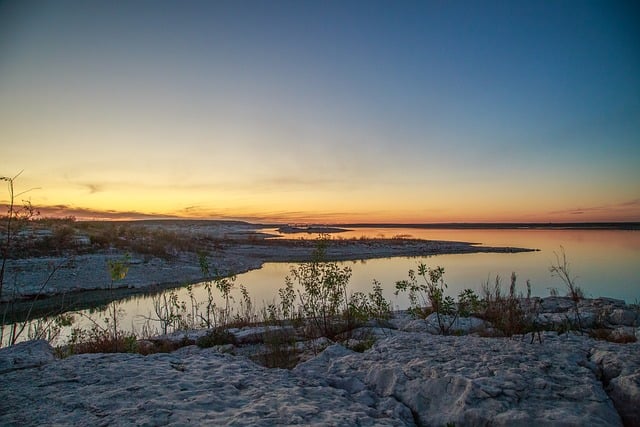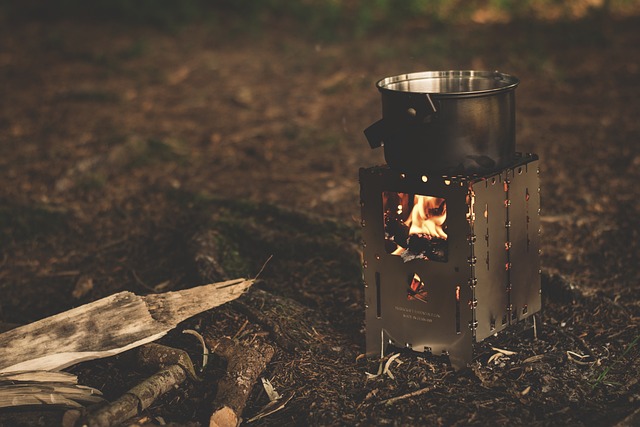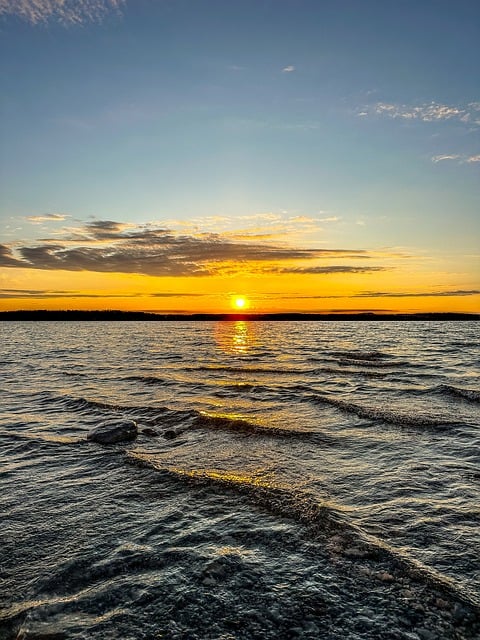
Flashlights are critical tools for outdoor guides and instructors, providing essential illumination in low visibility conditions. The best flashlights for these professionals offer features like variable intensity settings, adjustable focus, and the ability to attach accessories such as diffusers or night vision-preserving filters. It's crucial to select flashlights with durable, waterproof construction and reliable rechargeable batteries to ensure consistent performance in challenging environments. Specialized training is available for instructors to master these tools, which includes understanding different light modes, beam types, and effective battery management. By utilizing training resources and engaging in practical exercises that simulate real-life scenarios, outdoor guides and instructors can hone their skills and navigate confidently under the cover of darkness, ensuring safety and preparedness for a variety of outdoor activities at night.
navigating through darkness can be a daunting task, especially in unpredictable environments. A reliable flashlight serves as an indispensable tool for outdoor enthusiasts and professionals alike. This article illuminates the critical role of flashlights in enhancing navigation and safety during low visibility conditions. From choosing the right features to understanding battery considerations and employing effective techniques, we will guide you through the essentials of flashlight use. Additionally, we will explore accessories that can amplify your outdoor navigation experience and provide instructive resources for those who lead groups into the wilderness. Whether you’re an avid hiker or a seasoned instructor, this piece from Flashlights For Outdoor Guides And Instructors will shed light on the best practices to ensure you’re prepared for any low-light scenario.
- Understanding the Role of Flashlights in Navigation and Safety
- Key Features to Look for in a High-Quality Outdoor Flashlight
- Types of Flashlights Suitable for Low Visibility Conditions
- Battery Considerations: Ensuring Your Flashlight is Always Ready
- Techniques for Effective Flashlight Use in Varied Environments
- Flashlight Accessories to Enhance Outdoor Navigation and Efficiency
- Training Guides and Resources for Outdoor Instructors on Flashlight Usage
Understanding the Role of Flashlights in Navigation and Safety

Flashlights serve as indispensable tools for outdoor guides and instructors, particularly in environments where visibility is compromised. Their role extends beyond mere illumination; they ensure that both guides and those they lead can navigate safely through low-visibility terrains such as dense forests, caves, or during overnight expeditions. The right flashlight can make a significant difference between a successful outing and one that poses undue risk. Outdoor professionals rely on high-quality flashlights for tasks ranging from setting up camp to reading maps and detecting obstacles or hazards. These devices are engineered with robust construction to endure the rigors of outdoor use, and their bright beams can reveal paths, terrain features, and potential dangers that might otherwise remain hidden.
Moreover, flashlights for outdoor guides and instructors must possess specific characteristics. They should offer a reliable light output, have durable, weather-resistant designs, and provide multiple lighting modes to conserve battery life when full brightness isn’t necessary. The best flashlights also come with adjustable focus capabilities, allowing users to switch between wide flood beams for area illumination and tight spot beams for long-distance visibility. This versatility is crucial for outdoor guides who often need to adapt to changing conditions quickly. Additionally, the ergonomic design of these flashlights ensures they are comfortable to hold over extended periods, which is essential when conducting extensive navigational tasks. The strategic use of flashlights by outdoor guides and instructors not only enhances safety but also contributes to a more efficient and enjoyable experience for all participants in the journey.
Key Features to Look for in a High-Quality Outdoor Flashlight

When selecting a high-quality outdoor flashlight for navigation in low visibility conditions, it’s crucial to consider several key features that will ensure reliability and effectiveness. Firstly, luminosity and beam distance are paramount; a flashlight with a high-intensity LED capable of producing a strong, focused beam will illuminate your path and surroundings, providing clarity in the darkest environments. The brightness should be adjustable to conserve battery life when full power is not needed, and to maintain a longer operational time during extended excursions.
Durability is also non-negotiable for outdoor flashlights, as they must withstand the elements and rough terrain encountered in wilderness settings. A robust construction, often featuring aircraft-grade aluminum or high-impact resin, will protect the light from drops, falls, and the occasional bump against a rock or tree. Water resistance is another vital aspect; an IPX rating of at least 8 can ensure that your flashlight remains functional even when submerged in water. Additionally, impact resistance and a design that prevents water ingress are essential for maintaining visibility during unexpected weather changes or when crossing streams and rivers. For those who guide or instruct, a user-friendly interface, such as an intuitive switch mechanism and multiple modes including SOS and strobe, can be lifesaving in emergency situations. Flashlights for outdoor guides and instructors must also offer secure attachment options, like a carabiner clip or a lanyard hole, to keep the light readily accessible at all times. With these features in mind, any outdoor enthusiast can navigate with confidence through various terrains and conditions, ensuring safety and success on their journey.
Types of Flashlights Suitable for Low Visibility Conditions

When navigating through low visibility conditions, having a reliable flashlight is crucial for safety and effectiveness. Outdoor guides and instructors often encounter environments where daylight is scarce or obscured by weather conditions such as fog, rain, or darkness. In such scenarios, selecting the right type of flashlight can make all the difference. There are several types of flashlights designed specifically for outdoor use in low visibility:
High-intensity discharge (HID) flashlights, commonly known as LED flashlights, are highly recommended due to their durability and superior brightness. These flashlights offer an intense beam that can illuminate long distances, which is particularly useful when navigating through dense forests or open fields at night. They are also robust and resistant to shock and vibration, making them ideal for the demanding conditions often faced by outdoor professionals.
Another suitable option is a rechargeable flashlight with a focused beam. This type of flashlight allows users to see more clearly in front of them, which is essential when setting up camp or following a trail after dusk. The concentrated light disperses light over a narrow range, optimizing visibility for distant objects while conserving battery life. Additionally, these flashlights often come with various modes, including strobe and SOS signals, which can be vital in emergency situations. For those who require hands-free operation, headlamps are an excellent choice. They provide a hands-free solution that enables users to maintain their tasks or navigate terrain without the need for free hands. Flashlights for outdoor guides and instructors should also be weatherproof and feature a secure grip to ensure they remain operational even in wet or cold conditions. When selecting a flashlight for low visibility conditions, consider factors such as beam intensity, battery life, durability, and additional features like red or green filters that can preserve night vision.
Battery Considerations: Ensuring Your Flashlight is Always Ready

When embarking on outdoor excursions or guiding groups through low visibility environments, having a reliable flashlight is paramount. Flashlights for Outdoor Guides and Instructors must be equipped with high-quality batteries to ensure consistent performance. The reliability of a flashlight can often hinge on the type of battery it uses; lithium-ion batteries are favored for their longevity, lightweight properties, and ability to retain charge in cold conditions. Outdoor enthusiasts should always check the voltage and capacity of the batteries before setting out, as this will determine the flashlight’s brightness and runtime. It’s also wise to bring spare batteries, as they can be crucial for unexpected extended use or in situations where the flashlight is the only source of light. To maintain readiness, it’s advisable to fully charge and cycle new batteries before a trip, ensuring that they hold a charge well and prevent any surprise outages during critical navigation moments. Additionally, storing batteries at room temperature can help prolong their lifespan and ensure they are always ready when needed. By taking these battery considerations into account, guides and instructors can guarantee their flashlights will provide reliable illumination in unpredictable environments, enhancing both safety and situational awareness.
Techniques for Effective Flashlight Use in Varied Environments

When navigating in low visibility conditions, the use of flashlights becomes a critical skill for both outdoor guides and instructors. The effectiveness of a flashlight is not solely determined by its lumens output but also by how it’s employed in various environments. To illuminate a path through the wilderness or an unfamiliar indoor space, users should adopt techniques that maximize the light’s utility without compromising their own night vision or safety. For instance, when using flashlights for outdoor navigation, it’s beneficial to use a beam with a focused center and a wider peripheral light. This technique allows guides to observe their surroundings more comprehensively while maintaining a clear line of sight on the path ahead. Additionally, directing light at reflective surfaces can enhance visibility in dark or dimly lit areas. Outdoor instructors should teach their students to avoid pointing beams directly into each other’s eyes and to use hand signals in conjunction with flashlight usage when communication is critical but light conservation is necessary. Flashlights For Outdoor Guides And Instructors must be durable, reliable, and capable of varying beam intensities to adapt to different situations, such as dense forests or open plains where distances can be deceptive, and the terrain may change rapidly. By mastering these techniques, outdoor professionals can effectively use flashlights to ensure safe and efficient navigation in low visibility conditions. Flashlight manufacturers should consider these real-world applications when designing products for this market segment, ensuring that their offerings meet the specific demands of guiding and instructional tasks under less than ideal lighting conditions.
Flashlight Accessories to Enhance Outdoor Navigation and Efficiency

When venturing into outdoor environments where visibility is compromised, flashlights become indispensable tools for navigation and efficiency. For outdoor guides and instructors, the right flashlight accessories can transform a basic light into a versatile navigational aid. Selecting a high-quality flashlight with adjustable intensity settings allows users to conserve battery life while maintaining visibility over different distances. Additionally, beam focus features are crucial for directing light exactly where it’s needed, whether illuminating a path ahead or inspecting fine details in low-light conditions.
For those who frequently lead groups through challenging terrains, accessories like diffusers can soften the light beam, creating a broader and more evenly distributed illumination that benefits both the user and the entire group. Furthermore, attachable red or green filters can enhance night vision, as these colors are less distracting to the human eye in dark settings. Flashlights For Outdoor Guides And Instructors should also consider investing in headlamps, freeing up their hands for essential tasks while ensuring that light is directed exactly where it’s needed most. Rechargeable batteries and durable, waterproof construction further ensure reliability in unpredictable outdoor conditions. By incorporating these accessories, outdoor guides and instructors can significantly enhance their navigation capabilities and operational efficiency during low visibility outings.
Training Guides and Resources for Outdoor Instructors on Flashlight Usage

Flashlights are indispensable tools for outdoor instructors, particularly when guiding groups through low-visibility environments such as caves, dense forests, or during nighttime activities. To effectively utilize flashlights in these settings, instructors must be well-versed in the technical aspects and best practices of flashlight operation. Outdoor guides and instructors can enhance their skills and knowledge by leveraging a variety of training guides and resources specifically designed for them. These materials cover everything from the selection and care of high-quality flashlights to understanding the nuances of different light modes and beam types. For instance, some resources emphasize the importance of understanding how to manage battery life, adjust light intensity, and maintain a flashlight’s durability in various weather conditions. Additionally, these guides often include scenarios and exercises that simulate real-life outdoor conditions, allowing instructors to practice their skills under controlled environments before applying them in actual field situations. By engaging with these comprehensive resources, outdoor instructors can refine their ability to navigate safely and efficiently, ensuring they are prepared for the challenges of low visibility during their expeditions. For those seeking to deepen their expertise, advanced courses and workshops may also be available, providing hands-on experience and detailed instruction on using flashlights as a tool for navigation, safety, and decision-making in outdoor settings.
When venturing into low visibility environments, having a reliable flashlight is not just beneficial—it’s an indispensable tool for navigation and safety. This article has shed light on the critical aspects of selecting and using high-quality flashlights for outdoor adventures, ensuring that instructors and guides equipped with Flashlights For Outdoor Guides And Instructors can confidently lead their groups through various terrains. By understanding key features, battery considerations, and effective techniques, users can optimize their flashlight’s performance. Moreover, the inclusion of accessories and training resources underscores the commitment to enhancing both navigation and efficiency in outdoor settings. As a final note, it’s clear that the right flashlight is a cornerstone of outdoor preparedness, ensuring that no matter where your journey takes you, you can light your path with confidence.







